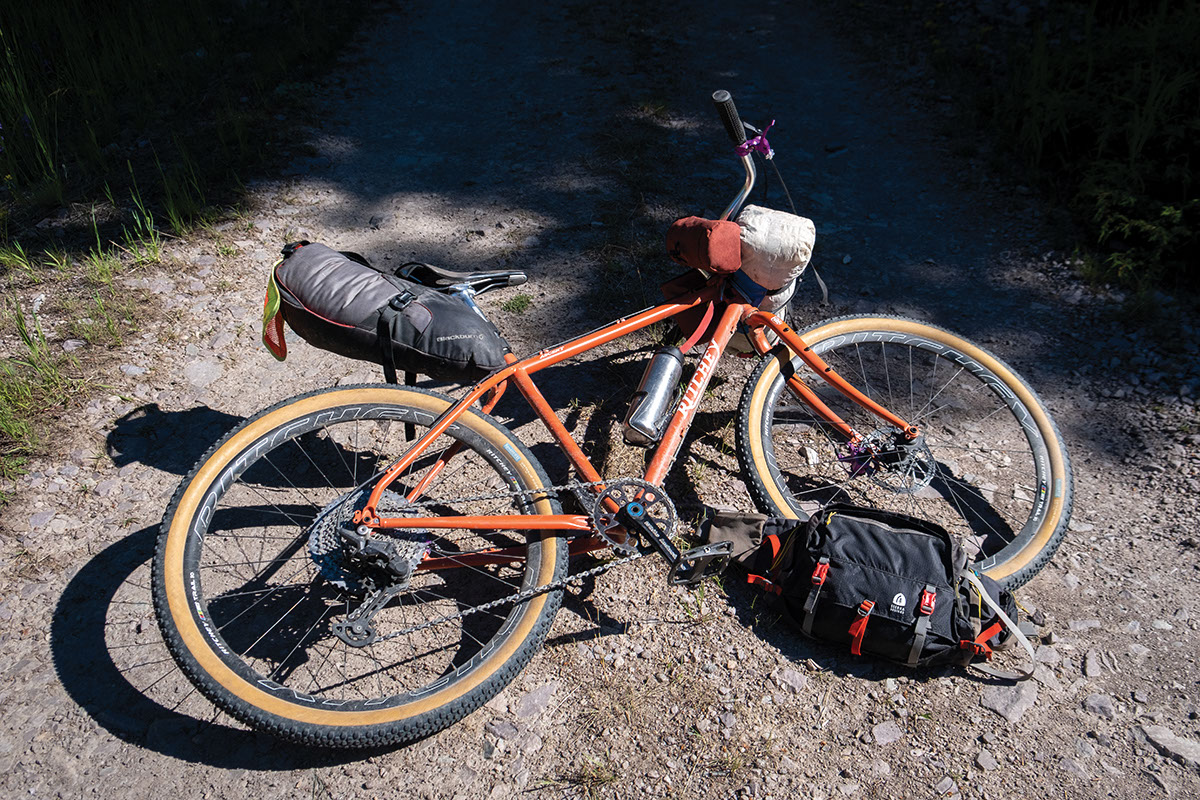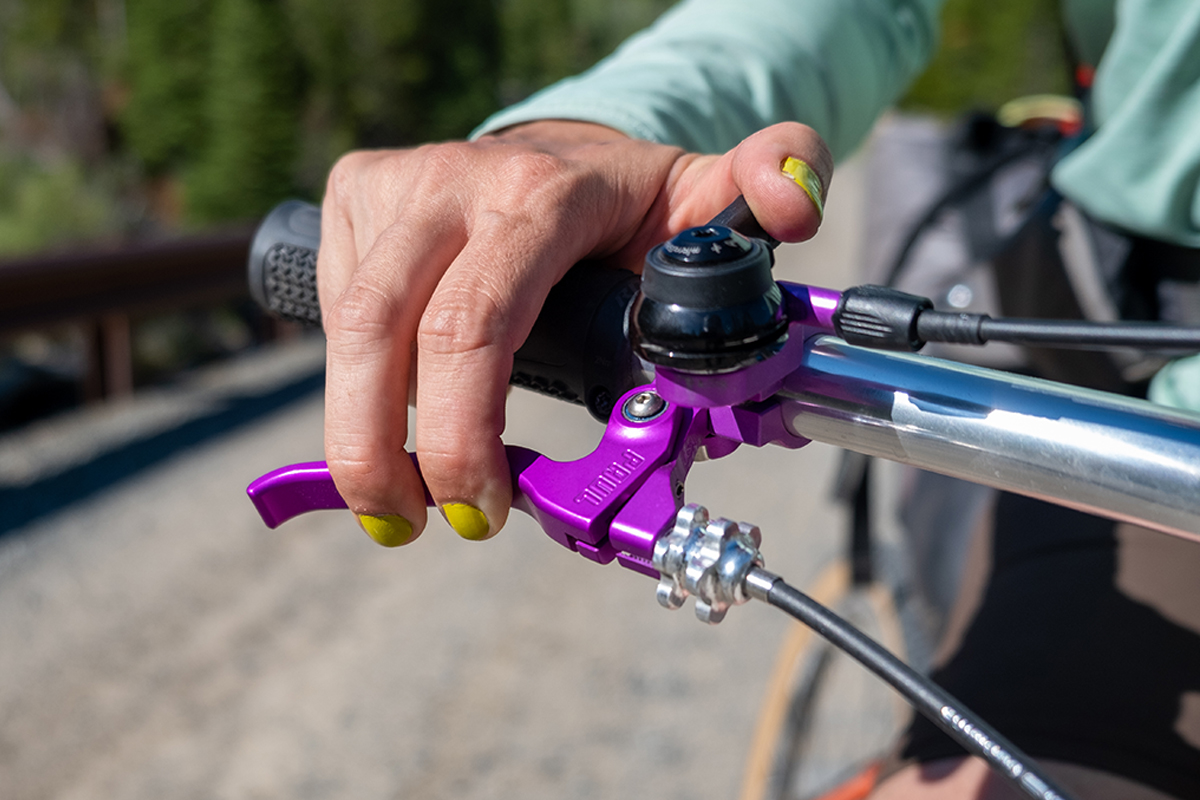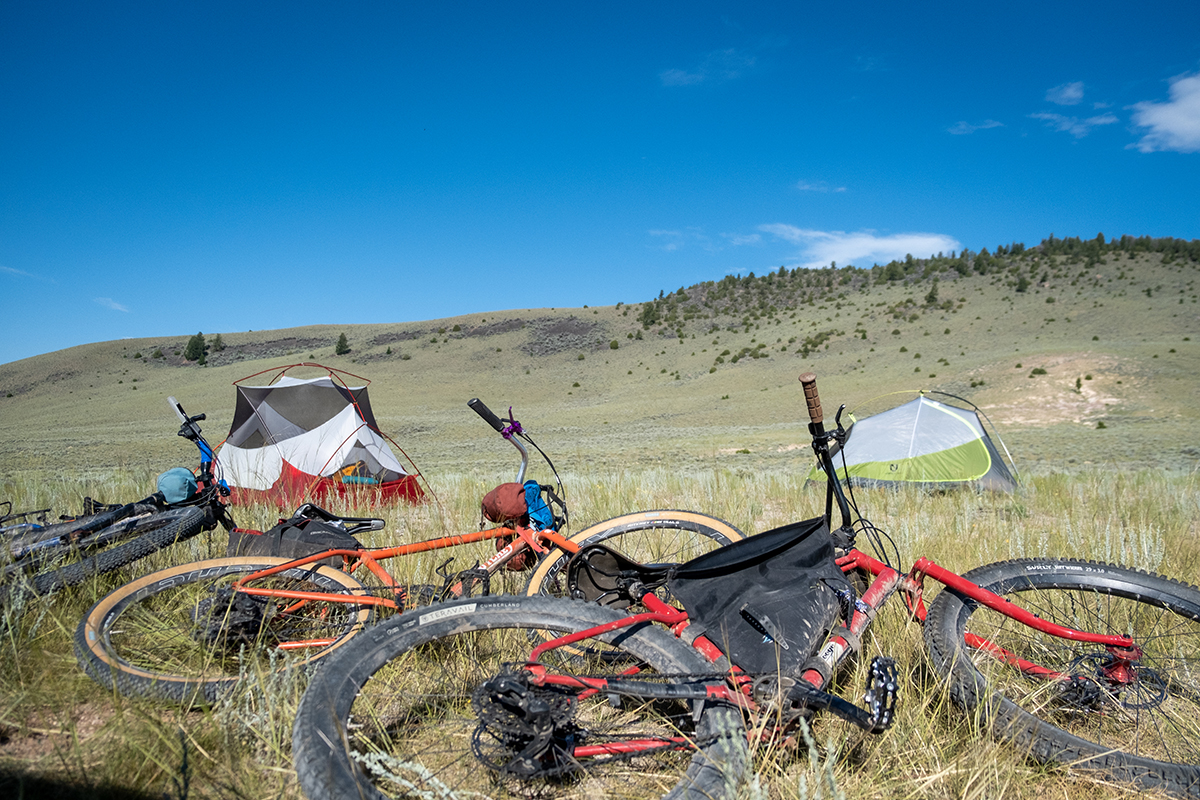Road Test: Ritchey Ascent
This article first appeared in the July 2022 issue of Adventure Cyclist magazine.
Tom Ritchey designed and introduced the first Ascent about 30 years ago with the intent to offer a mountain bike that would inspire riders to get lost in the woods. The Ascent was resurrected in 2015 as an adventure bike to accept either 27.5in. or 29in. wheels in a shift to be a bit more of a Swiss army knife. The historic Ascent ethos remains in the 2021 model you see here with only minor changes to the geo, but adds modern componentry, a new Ritchey fork with Boost hub spacing, thru-axles, and a whole mess of adventure-ready braze-ons for racks, cargo, and a dynamo. The frame and fork are both made of triple-butted Ritchey Logic steel tubing, of course.
It’s worth noting that the Ascent is only sold as a frame and fork, not as a complete bike. The media bike I received features some pretty luxe components from Paul Component Engineering and White Industries, but a much more affordable build is totally on the table.
It’s my assumption that if someone is interested in owning a Ritchey frame, they’re at a point in their cycling journey where they know what they like and they have at least some opinions about componentry. They also probably love to tinker and switch things up from time to time, though I don’t see that personality trait as a requirement for whoever owns this bike. The seemingly endless manifestations of the Ascent are exciting and impressive even if you don’t know exactly what you like. In fact, this bike is modular enough that you can (with access to the right components) have a lovely bike that makes complete sense in myriad builds.
As I began spending time with the Ascent, I found that it was much easier to define this bike by what it’s not than by what it is. When I first built the bike up, my brain labeled it “mountain bike” because of the 27.5 x 2.2in. knobby tires (Rene Herse tubeless Umtanum Ridge), the flat bars, and the general mountain bike-y geometry with the headtube angle at 70.5° and generously sloped top tube. Knowing it could accommodate up to 29 x 2.6in. tires with the right rims didn’t hurt that assumption either. On one group ride, I was chatting with a stranger who commented that the bike looked like “a really nice beer-getter” (which prompted an involuntary eye roll from me). Still, with my moral disagreement at putting Paul components on a bike whose primary purpose is “beer getting,” this stranger made me scratch my head. Is this a mountain bike?
A seasoned reader of our Road Tests might recall that we (in Missoula) frequently break in trail-appropriate test bikes on a twisty singletrack called MoZ, which spits the rider out right in the middle of town. With “mountain bike” in mind, MoZ seemed like a logical first step. I pointed the bike up and began climbing the smooth, steep terrain gleefully thanks to the SunRace MX80 cassette’s mega gears (11–50T with a 38T chainring). One could even up the ante by choosing a double chainring up front. The microSHIFT/Paul friction shifters made shifting through multiple gears quick, easy, and precise. As I climbed, I quickly learned that Ritchey’s WCS Skyline saddle is not the most comfortable without a chamois (and I later read that it’s ideal for riders who lack flexibility, which is definitely not a limitation of mine.)

The trail was freshly dry with no signs of winter’s snowmelt, a nice surprise since I’d been a little nervous heading to the trailhead for my first time since spring. Climbing to the top of the trail on such a capable bike was so delightful, though, that I decided to go a little farther into a section where the trail mellows and becomes a flowy doubletrack to the tree line. The angle of the seat tube and relatively long chainstays put my weight almost directly over the rear wheel, which helped a lot with traction. I turned around at the apex, let a little air out of my tires, and took off down the wider, rocky doubletrack.
This bike positively dances back and forth down a good rocky road, and it feels nothing short of a well-coordinated salsa boogie, moving side to side quickly and gracefully. I attribute its dance-like nature to the fact that this steel bike weighs no more than 25 pounds when adorned with Ritchey WCS Trail 30 aluminum rims (which I honestly assumed were carbon this whole time) and Rene Herse tires. I don’t know what “lateral stiffness” or “vertical compliance” mean in a practical sense, but I can tell you that riding this bike is smooth as heck.
My salsa bliss ended in somewhat of a rude awakening when the doubletrack transformed back into singletrack. Although the frame is a medium, which is what I typically ride as a five-foot eight-inch human, the Ascent feels a bit big and unwieldy to me on technical downhills. The Kyote bars sweep back so far that shortening the stem would effectively result in a negative stem length, which would likely compromise the overall smooth handling of the bike. As I careened through switchback after switchback, reassuring myself that the bars were wide as heck and I just needed to get used to them, I wondered if maybe I’d misjudged the Ascent on first glance.
Luckily, the Paul Klamper brakes kept me safe and upright — hands down the only disc brakes I have ever ridden that are completely silent when engaged. The Paul Love Levers are easy to reach and don’t require a lot of squeeze power to lock the wheels up, which was jarring at first before I got used to them. Perhaps adding a dropper post would have helped me feel more in control on the descent.

Not really fitting squarely into the “gravel bike” category either, the Ascent is much more upright when outfitted with Ritchey’s Kyote bars. The 27.5° sweep and 35mm rise give it a much more casual feel than what I’d consider a proper gravel bike (maybe that’s what tipped the stranger off to call it a beer-getter.) These same qualities lead me to strike “race bike” from the list of possible labels. Though it does feel surprisingly snappy on pavement with the “noise-canceling” Umtanum Ridge tires, the geometry and flat bars don’t lend the rider the power output necessary for racing. Perhaps pairing the Ascent with a shorter stem and dropbars would give this bike a racier feel, but I still have my doubts that it would be my first pick.
To change up the terrain, I joined some friends on a ride up a slightly inclined dirt road that follows a creek way back into the Wilderness. After turning to the Rene Herse tire pressure calculator, I no longer felt like I was skittering around on loose surfaces. (The calculator uses the rider’s weight combined with the weight of the bike to calculate exact pressure amounts depending on the size of the tires.)
A few weeks later, I loaded the Ascent up for a bike overnight taking the same route, and it felt even more at home. What once felt a bit too lively for me was weighed down by camping gear, stabilizing the ride quality considerably. You know a setup is good when you stop thinking about it and turn your focus to your surroundings. It was at this point that I struck the correct chord with the Ascent. Once dialed, this campout taught me that the ideal setting for the Ascent is more than just a wide dirt road that doesn’t require an abundance of technical focus; it’s also being surrounded by chatty friends while churning at a casual pace through the woods. Adventure cruising, you might say. This, I noted, was where this bike was intended to be ridden.
Although I am always skeptical of any bike in the running to be a “quiver killer,” the Ascent is certainly an inspiring contender as far as mountain touring and camping is concerned. I am a firm believer in investing in a bike that you can’t take your eyes off, because I truly think it motivates you to pick it up and roll it out the door more frequently. Though I wouldn’t quite call it a bargain (at least with the build I tested), the newest iteration of the Ritchey Ascent is a fun, versatile choice for anyone looking to salsa dance their way down a chunky dirt road into a dusty, wooded sunset to set up camp for a night or four. And to answer the question “what is this bike?” It’s truly whatever you want it to be.

Ritchey Ascent (as tested)
Price (frame, headset, fork): $1,299
Sizes available: S, M, L, XL
Size tested: M
Weight: 24.1 lbs. (without pedals)
Test Bike Measurements
Stack: 588.5mm
Reach: 380.5mm
Head tube length: 130mm
Head tube angle: 70.5°
Seat tube length: 465mm
Seat tube angle: 73.5°
Top tube: 556mm (effective)
Chainstays: 463mm
Bottom bracket drop: 68mm
Fork offset: 52mm
Wheelbase: 1078mm
Standover height: 795.8mm
Specifications (as tested)
Frame: Heat-treated, triple-butted Ritchey Logic steel, two bottle mounts, triple mounts, rack and fender mounts
Fork: Heat-treated, triple-butted Ritchey Logic steel, rack and fender mounts, triple mounts
Handlebar: Ritchey Classic Kyote, 800mm
Stem: Ritchey Classic C220, 90mm
Rear derailer: Shimano Deore, 11spd
Shifter: microSHIFT/Paul friction
Brake lever: Paul Love Lever
Brakes: Paul Klamper mechanical disc
Rotors: SRAM Centerline 160mm
Bottom bracket: White Industries, threaded
Crankset: White Industries M30, 38T, 170mm
Cassette: SunRace MX80, 11–50T, 11spd
Headset: Ritchey Classic Drop-In
Seatpost: Ritchey Classic Zero
Saddle: Ritchey Skyline
Hubs: Phil Wood, 110 x 15mm front, 148 x 12mm rear, thru-axles
Rims: Ritchey WCS Trail 30, 28h, tubeless ready
Tires: Rene Herse Umtanum Ridge, 27.5 x 2.2in., tubeless
Gearing Range
38
11 95.6
13 80.9
15 70.1
18 58.4
21 50.1
24 43.8
28 37.6
32 32.9
36 29.2
42 25.0
50 21.0
Contact: 551 Taylor Way Unit 8, San Carlos, CA 94070, 650.517.1841, ritcheylogic.com


